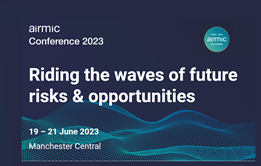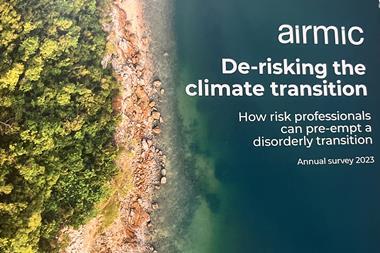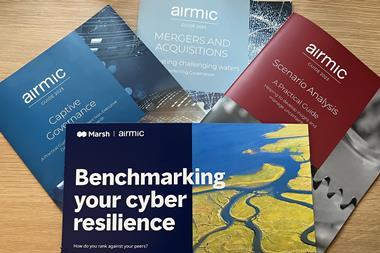Risk managers are no strangers to the power of statistics, but using them incorrectly can damage trustworthiness. Here are ten guidelines for getting communications right
Statistics are a huge part of a risk manager’s world, whether it’s presenting risk data to the board or looking at the information being disseminated by the organisations they work for.
Indeed, examining the likelihood and impact of potential risks forms a significant part of many risk managers’ day-to-day working lives.

But did you know that using statistics in the wrong way can damage your trustworthiness?
This was the message from professor Sir David Spiegelhalter, who delivered a keynote at the Airmic conference in Manchester.
He was discussing the way that statistics are often used (and abused) by governments, media, and corporations to create a narrative that’s far from what’s intended and proved by the research.
He shared with the audience ten key steps for making sure that you’re using research in a way that demonstrates trustworthiness.
Ten Tips for trustworthy evidence communication (Spiegelhalter et al, 2020, Nature)
- Address all the questions and concerns of the target audience
- Anticipate misunderstandings, and pre-emptively debunk or explain them.
- Don’t cherry-pick findings.
- Present potential benefits and potential harms in the same way so that they can be compared fairly.
- Avoid the biases inherent in any particular presentation format (eg use both ‘positive’ and ‘negative’ framing together).
- Don’t use words instead of numbers: either use numbers alone, or both together
- Demonstrate ’unapologetic uncertainty’: be open about a range of possible outcomes.
- Where you don’t know, say so; say what you are going to do to find out, and by when.
- Give people relevant cues to the quality of the underlying evidence (either stating the quality directly or by describing the size and source of the dataset).
- Use a carefully-designed layout in a clear order, and include your sources.
For risk managers, there are two obvious areas where adopting Spiegelhalter’s guidelines could have a positive impact.
The first is when speaking with the c-suite about the risks facing the organisation.
While it might be tempting to use the data you uncover to try and influence a specific positive outcome, Spiegelhalter cautions against this approach.
His research has found that giving a balanced view that considers positives and negatives increases trustworthiness and means you’re more likely to have an impact.
He explained: ”You should, unless there’s a very special circumstance, be trying to inform people, not to persuade them or manipulate their emotions, not to try to get them to do something or believe something, but instead to empower them to make better decisions through better information.
”To achieve that you have to be agnostic about what they actually do because you’re not trying to manipulate their behaviour. It’s difficult, but we should try. And that means being balanced…
”You’ve got to give the positives and the negatives, the winners and losers, the benefits and the harms. You’ve got to be upfront about uncertainties, what you don’t know and how good your evidence is.
”By giving a one-sided message… you are actively decreasing trust in the group you are trying to influence, which is completely counterproductive.”
Blog: Airmic Conference 2023 from Manchester

Daily news summary
- 1
 Currently
reading
Currently
reading
Airmic 2023: how risk managers can improve trustworthiness
- 3
- 4
- 5
- 6
- 7
- 8
- 9
- 10
- 11
- 12





































No comments yet